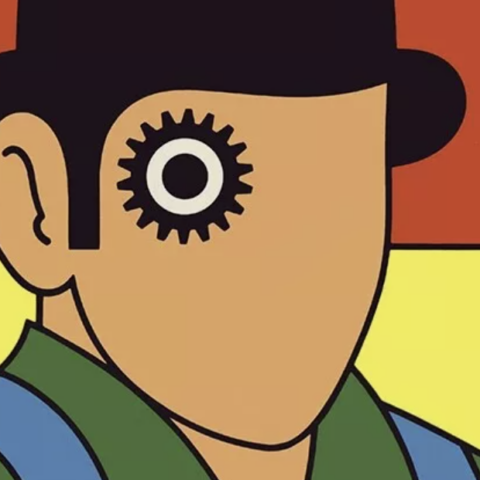Best Metaphors in the World of Books.
By Jo Phillips
Who would have thought this one of the best books of the 20th century would have been about a farmyard full of animals? What does it all mean? What about a book that deals with the devil arriving in the former Soviet Union, and then there is a Tiger called Richard Parker? Absurd? Surreal or multi-layered. There are some great books whose initial story is just a metaphor for some of life’s great questions. F8d a few great metaphorical best reads here in Best Metahors in the World of Books.
One of the joys for many during a holiday is getting the time to spend with a really good read. Some will choose a historical narrative, others a murder mystery whilst for some it’s a love story but if you are a fan of something with few layers to its pages then a good metaphorical novel could be to your taste.
“It is as reasonable to represent one kind of imprisonment by another, as it is to represent anything that really exists by that which exists not.”
Daniel Defoe,
Let’s start with some animals with human tendencies. British writer George Orwell is best known for his dystopian novel Nineteen Eighty-Four and his allegorical novella Animal Farm. The farm novel deals with animals being the victims and then become the aggressors
A farm is taken over by its overworked, mistreated animals. With flaming idealism and stirring slogans, they set out to create a paradise of progress, justice, and equality. Thus the stage is set for one of the most telling satiric fables ever penned in this razor-sharp fairy tale that records the evolution from revolution against tyranny to a totalitarianism just as terrible.
When written in 1945 Russia was seen to be the underlying subject yet in today’s world it still has meaning with the message still ferociously fresh.
Our next book Life of Pi concerns a young man named Pi and a Bengal ‘talking’ tiger called Richard who survives a storm and sinks whilst on a Japanese freighter that is transporting animals from the zoo in India to a new home in North America.
Pi, the narrator is able to find a small lifeboat, only to find that it holds a spotted hyena, an injured zebra, and an orangutan. distressingly for the boy Pi the hyena kills the zebra and then the orangutan. All the while a tiger has been hiding under the boat’s tarpaulin, called Richard Parker who kills and eats the hyena.
Through many trials and tribulations they both survive for two hundred and twenty-seven days. The lifeboat washes onto a beach in Mexico, after which Richard Parker disappears into the nearby jungle without looking back.
The book, told in three parts explores several issues including spirituality and metaphysics raising questions about the nature of reality and how it is perceived and told.
Canadian writer Yann Martel has been noted saying that the book can be summarized in three statements: “Life is a story”; “You can choose your story” and ” A story with God is the better story”.
Another book, another animal, this time the creature is never fully described. The Metamorphosis by Franz Kafka tells the story of salesman Gregor Samsa, who wakes one morning to find himself inexplicably transformed into a huge insect come-vermin.
He struggles to adjust to this condition, whilst Gregor’s family, boss and other tenants of the house are horrified by his presence making him feel like a burden. Ultimately he dies leaving his family ultimately free to move on, even though he had been the main breadwinner within the family.
Franz Kafka left the interpretation of much of this book to the reader. So each person will get something different from it. He had no intention of labelling Gregor as anything specific, but instead was trying to convey Gregor’s disgust at his transformation. a quintessentially alienated man. A harrowing, and yet though absurdly comic it is a meditation on human feelings of inadequacy, guilt, and isolation.
Now moving on from animals to a different kind of experience.
The Plague (La Peste) is a 1947 absurdist novel by Albert Camus. It tells the story from the point of view of a narrator in the midst of a plague sweeping the French Algerian city of Oran. The narrator remains unknown until the beginning of the last chapter.
The book tells a gripping tale of human unrelieved horror, of survival and resilience, and of the ways in which humankind confronts death. A parable of ageless moral resonance, of profound relevance even in our times.
The plague begins as a series of portents, unheeded by the people. It gradually becomes an omnipresent reality, obliterating all traces of the past and driving its victims to almost unearthly extremes of suffering, madness, and compassion.
Considered an existentialist classic despite Camus’ objection to the label. The novel stresses the powerlessness of the individual characters to affect their destinies. The novel stresses the powerlessness of the individual characters to affect their own destinies.
And lastly in our overview is Kafka on the Shore. An unusually captivating and gripping novel blending dreams and reality, a 2002 novel by Japanese author Haruki Murakami.
The book tells the stories of the young Kafka Tamura, a bookish 15-year-old boy who runs away from his Oedipal curse, and Satoru Nakata, an old, disabled man with the uncanny ability to talk to cats. The book incorporates themes of music as a communicative conduit, metaphysics, dreams, fate, and the subconscious.
Comprising two distinct but interrelated plots, the narrative runs back and forth between both plots, taking up each plotline in alternating chapters.
The odd-numbered chapters tell the 15-year-old Kafka’s story as he runs away from his father’s house to escape an Oedipal curse and embarks upon a quest to find his mother and sister. He eventually finds shelter in a quiet, private library in Takamatsu, run by the distant and aloof Miss Saeki and the intelligent and more welcoming Oshima.
The even chapters tell the life of Satoru Nakata, an old, disabled man with the uncanny ability to talk to cats. Starting with military reports of a strange incident in Yamanashi Prefecture where multiple children, including Nakata, collapsing in the woods. After the incident, Nakata is the only one of the children who came out of the incident without any memory and unable to read and write.
The book demonstrates Murakami’s typical blend of popular culture, mundane detail, magical realism, suspense, humour, an involved plot, and potent sexuality. It also features an increased emphasis on Japanese religious traditions, particularly Shinto.
Interestingly after the release of the book, Murakami allowed for questions about the novel to be asked by readers, and he responded to many of them.
Now if this style of novel interests, then here are a few more with similar themes
Like Water for Chocolate by Laura Esquivel, a parody of periodicals published for women during the 19th century. These periodicals would publish fiction for women, alongside recipes and advice for homemaking.
The Old Man and the Sea is a 1952 novella by the American author Ernest Hemingway. A modern classic is the superbly told, tragic story of a Cuban fisherman in the Gulf Stream and the giant Marlin he kills and loses
Moby Dick by Herman Melville is another seafaring tale. The book is the sailor Ishmael’s narrative of the maniacal quest of Ahab, captain of the whaling ship Pequod, for vengeance against Moby Dick, the giant white sperm whale that bit off his leg on the ship’s previous voyage








